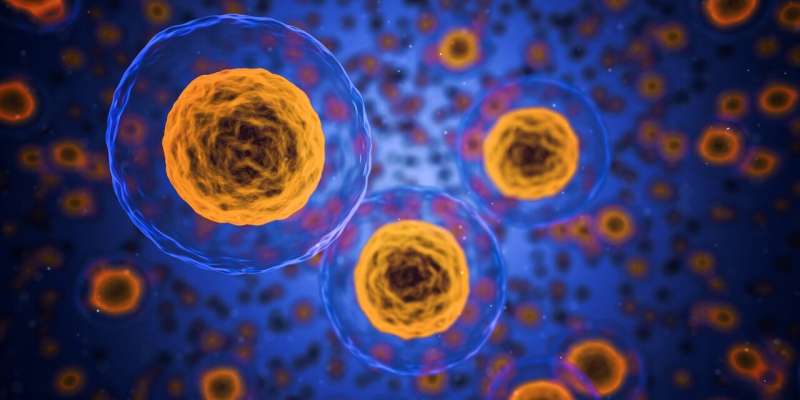
Over the past decade, human papillomavirus (HPV) has increasingly been identified as a significant cause of certain head and neck cancers—for example, evidence suggests it causes 70% of oropharyngeal cancers in the United States.
Further, over the past three decades, incidence of HPV-driven cancers has increased substantially worldwide and in the U.S. While there are well-established screening tools, as well as vaccines, for HPV-driven cancers such as cervical cancerthere are fewer resources for HPV-driven head and neck cancers. As a result, researchers are working with a sense of urgency to develop innovative therapeutics to treat them.
One groundbreaking therapeutic has shown significant promise in a phase 1 clinical trial led by Antonio Jimeno, MD, Ph.D., co-leader of the University of Colorado Cancer Center Developmental Therapeutics Program and the CU Cancer Center head and neck cancer SPORE grant. Research results published today show that a microfluidic squeezing technology used on peripheral blood mononuclear cells (PBMCs), a type of immune cell, helps stimulate anti-tumor activity in a subtype of HPV16-positive cancers, including head and neck, cervical, and anal cancers.
“This technology is quite novel,” Jimeno explains. “As opposed to other cell therapies that require a patient’s cells to be genetically modified, this involves a different way of manipulating cells that does not lead to genetic modifications. It makes the process faster and perhaps more agile as to what you can direct the cells against.”
“Sending them to boot camp”
This research was motivated, in part, by an awareness that people diagnosed with certain HPV-driven head and neck cancers don’t have a lot of conventional treatment options. “We’re very aware of this situation, so we have a large group of investigators conducting immunotherapy and cell therapy clinical trials so that hopefully soon we will be able to offer patients more effective and less toxic options,” Jimeno says.
The phase 1 clinical trial focused on patients with a subtype of HPV16-positive solid tumors. Participants sat for a process called apheresis, which involves removing whole blood and putting it through a centrifuge to separate the whole blood into its individual parts. The aim of the apheresis session is to acquire between 5 to 10 billion PBMCs.
The PBMCs were then sent to a laboratory to be trained to find and kill cancer cells caused by HPV, “basically sending them to boot camp so they learn how to find and attack the cancer,” Jimeno says.
Using Cell Squeeze technology, the PBMCs were sent through very tight channels that opened pores on their surface. Then, the cells were fed a peptide, or piece of protein, related to the HPV virus—one that immune cells usually recognize—so that they could learn to recognize it and build a memory of it. The aim of the process is to help ensure that the next time these cells encounter HPV-driven cancer cells, they attack.
Once the cells had gone through the Cell Squeeze process, they were infused back into patients during a one-hour outpatient therapy session. This process happened every 21 days and did not require patients to receive concurrent immunosuppression or chemotherapy.
Showing promising results
“It’s very early in the process with this technology, but the results we observed in this phase 1 trial are promising,” Jimeno says. “The fact that the cells are from a patient’s own blood means that rejection is not going to be an issue. Also, the fact that they have not been genetically modified on their surfaces makes them less likely to attract unwanted attention from the immune system.”
While some study participants experienced mild side effects such as fatigue, rash, or a slight immune reaction, “the toxicity was perceived to be manageable and significantly outweighed by the benefits,” Jimeno says. “We did biopsies before and after therapy, and after the therapy we could see these modified cells we had given back to the patient, and they were activated and sort of ‘chewing’ at cancer cells.
“Most importantly, we had some patients here in Colorado who were on the therapy for almost a year and their disease remained stable. For cancer patients who have run out of other options, being able to be on a therapy without very serious side effects, that doesn’t require a hospital stay or supplementary chemotherapy, is a very appealing option.”
Following the phase 1 trial, a phase 1B trial is ongoing that combines first-generation cells and immunotherapies. Another study recently opened that works with a second generation of the PBMCs made in an improved way, Jimeno says. Further, inclusion criteria for the study with second-generation PBMCs are much broader.
Because the process does not require genetic modifications, Jimeno says, it is fast and agile, and has potential for other types of cancer.
“The promise of these cell technologies is that many of them are being developed in a way that they can be actually generated at the point of delivery,” Jimeno explains. “We can envision a future where these or similar approaches work, and where we have small processors locally—for example, at the Gates Biomanufacturing Facility here on campus—so that we’re reducing patient wait times. We could potentially offer a therapy that could be turned around very soon after we collect a patient’s cells. This is a super exciting field and that’s why we’re so interested and working hard to drive this.”
More information: Phase 1 study to determine the safety and dosing of autologous PBMCs modified to present HPV16 antigens (SQZ-PBMC-HPV) in HLA-A*02+ patients with HPV16+ solid tumors, Investigational New Drugs (2023). link.springer.com/article/10.1 … 7/s10637-023-01342-x
Citation: Innovative technology shows great promise against certain head and neck cancers (2023, March 4) retrieved 7 April 2023 from https://medicalxpress.com/news/2023-03-technology-great-neck-cancers.html
This document is subject to copyright. Apart from any fair dealing for the purpose of private study or research, no part may be reproduced without the written permission. The content is provided for information purposes only.
Note: This article have been indexed to our site. We do not claim legitimacy, ownership or copyright of any of the content above. To see the article at original source Click Here












